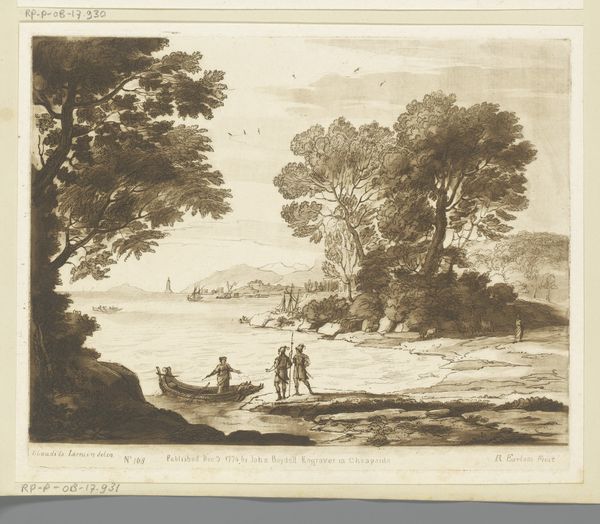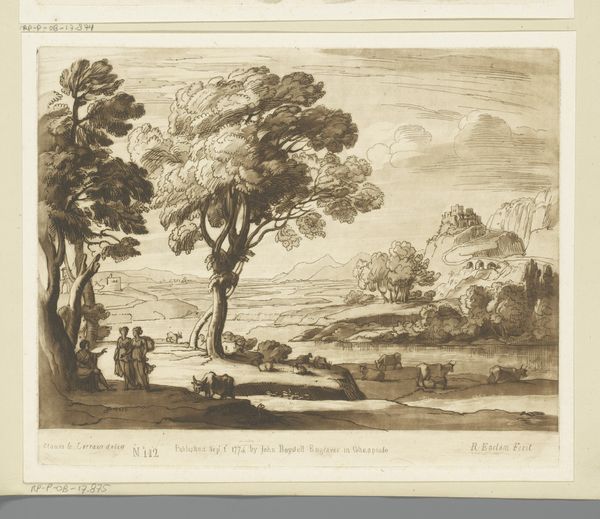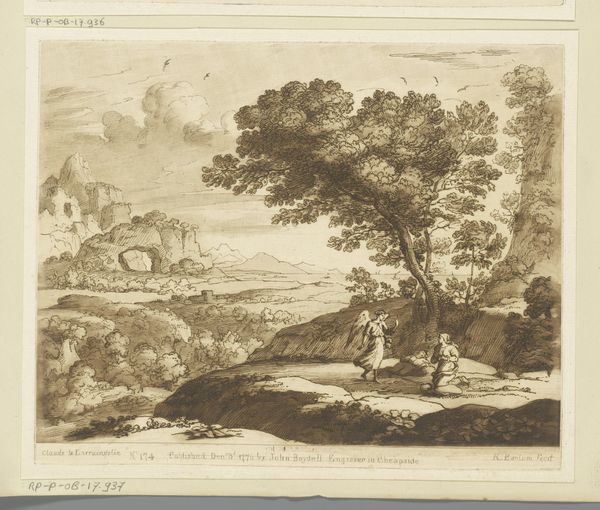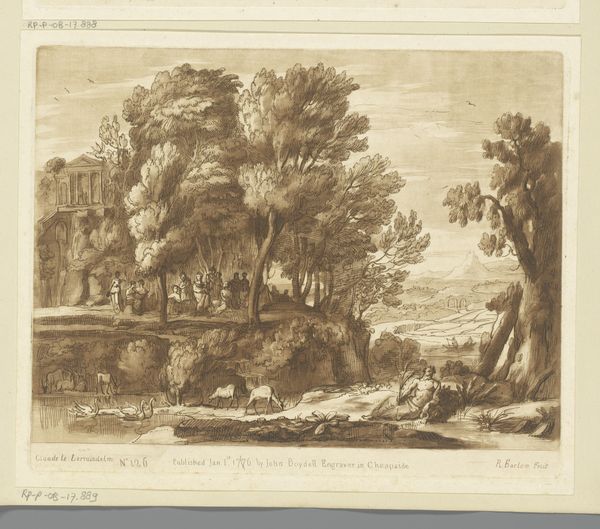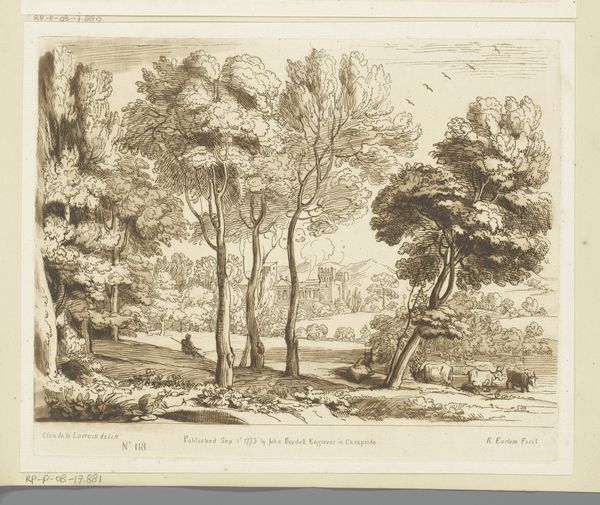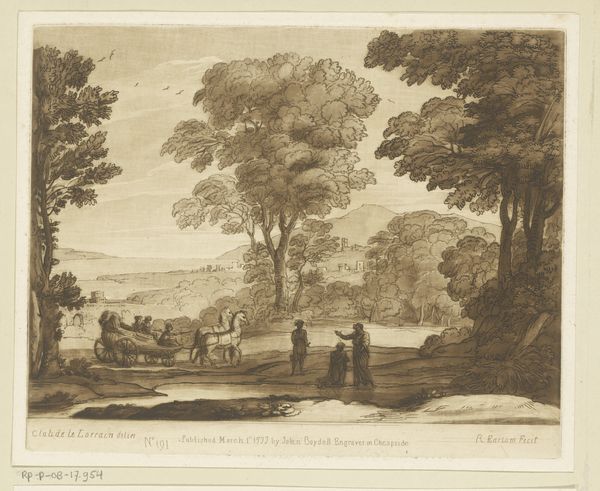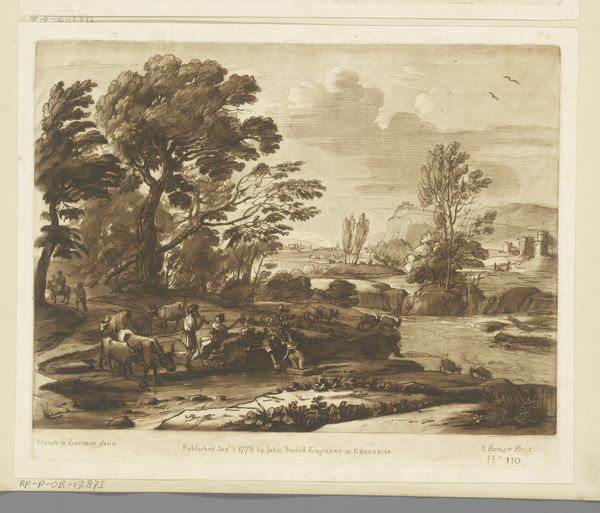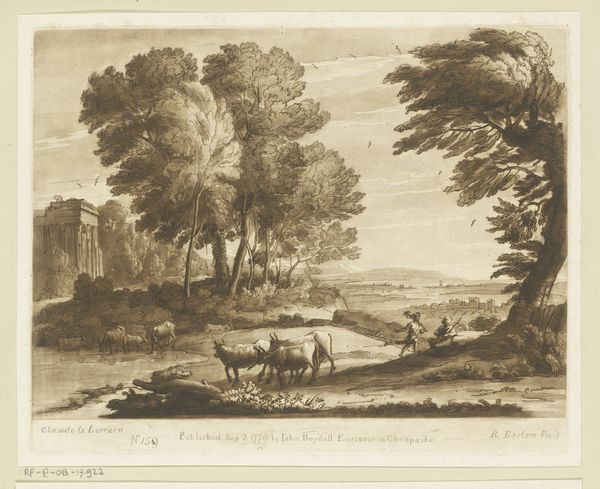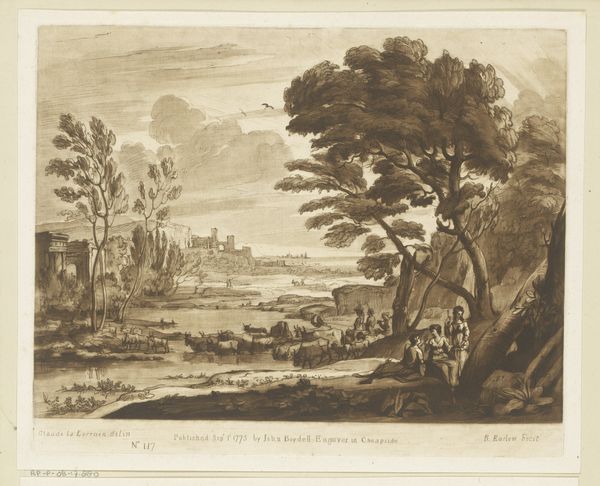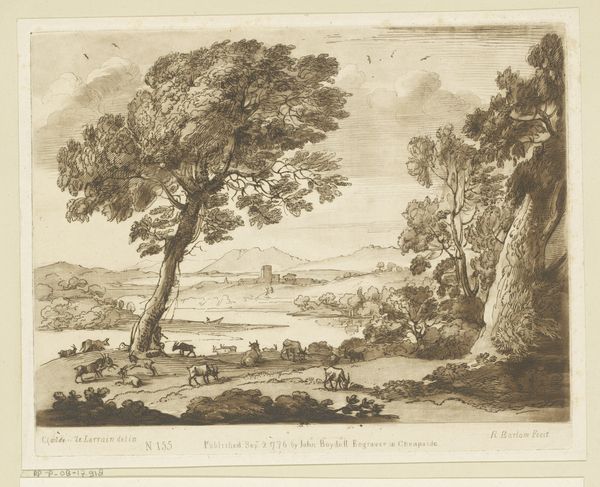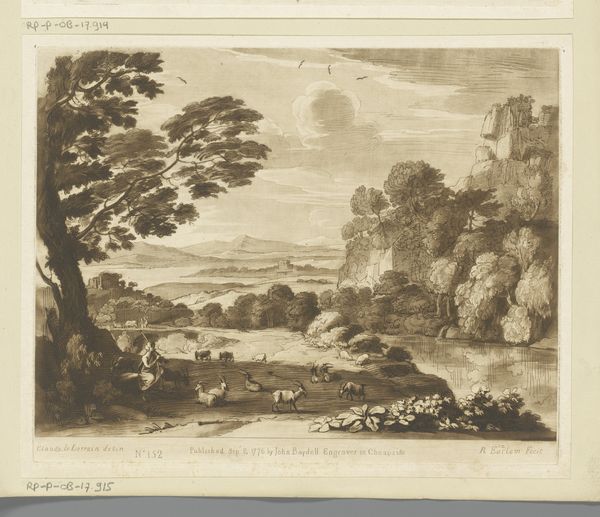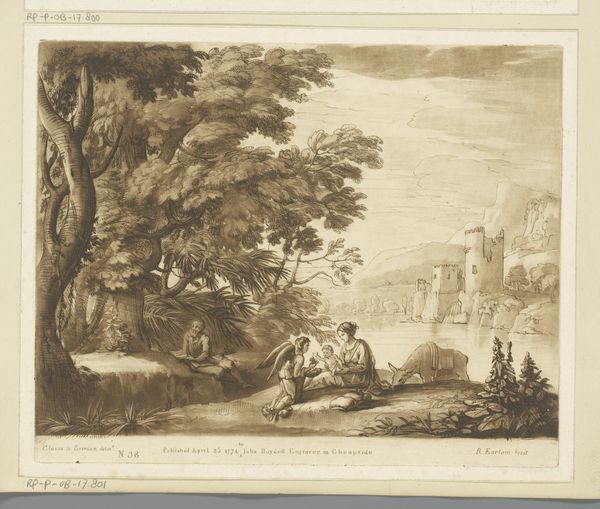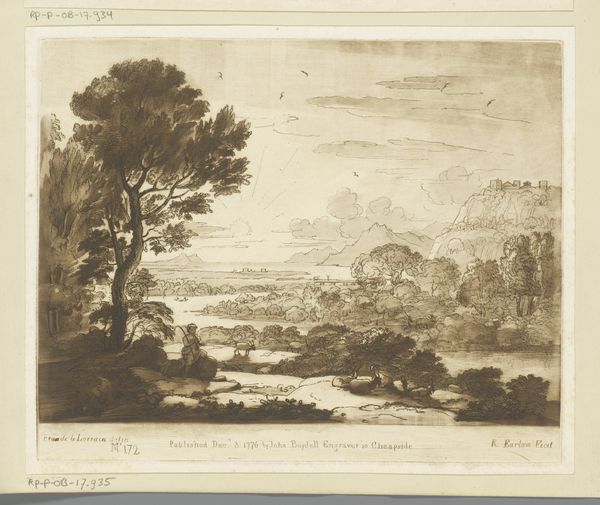
Dimensions: height 208 mm, width 258 mm
Copyright: Rijks Museum: Open Domain
Editor: This is "Coastal Landscape with Aeneas and Achates Hunting Deer", a print after Claude Lorrain, possibly from 1776, engraved by Richard Earlom. I'm struck by how it seems to idealize nature and man's relationship to it. What layers do you see when you look at it? Curator: I see this not just as an idealized landscape but as a commentary on power, colonization, and the construction of narratives. The figures of Aeneas and Achates are derived from Virgil's Aeneid, an epic poem that provides a mythical origin story for the Roman Empire, a story steeped in themes of conquest and destiny. Editor: So, their hunting isn’t just hunting? Curator: Precisely. The act of hunting within this idyllic landscape can be seen as a metaphor for taming the "wild," for establishing dominion. Earlom created the print based on a painting by Claude Lorrain, and Lorrain's work has often been read as reflecting and even glorifying the burgeoning colonial enterprises of his time. This image thus participates in a complex cultural conversation, one that intersects with questions of national identity, imperial ambition, and the visual representation of power. The placement of the hunters in the foreground emphasizes the European gaze exerted on foreign lands. Editor: That’s a really different lens than what I initially saw. The figures being derived from the Aeneid does add a historical weight. Curator: Indeed. And consider the genre of landscape itself. In the 18th century, it was increasingly associated with notions of national identity and territorial control. How do you think contemporary theory helps us unpack these narratives? Editor: I guess it makes you question the relationship between humans and landscape that seems harmonious, which in turn unearths how the representation of nature might gloss over the reality of how resources are extracted and land exploited. Curator: Exactly. By critically examining these images, we can begin to dismantle the power structures they perpetuate and create space for alternative narratives. Editor: It's incredible how much deeper a seemingly simple landscape print can be when viewed through this perspective. Curator: Yes, and art invites us to reflect and question what’s in front of us, while it deepens our comprehension of history and cultural frameworks.
Comments
No comments
Be the first to comment and join the conversation on the ultimate creative platform.
